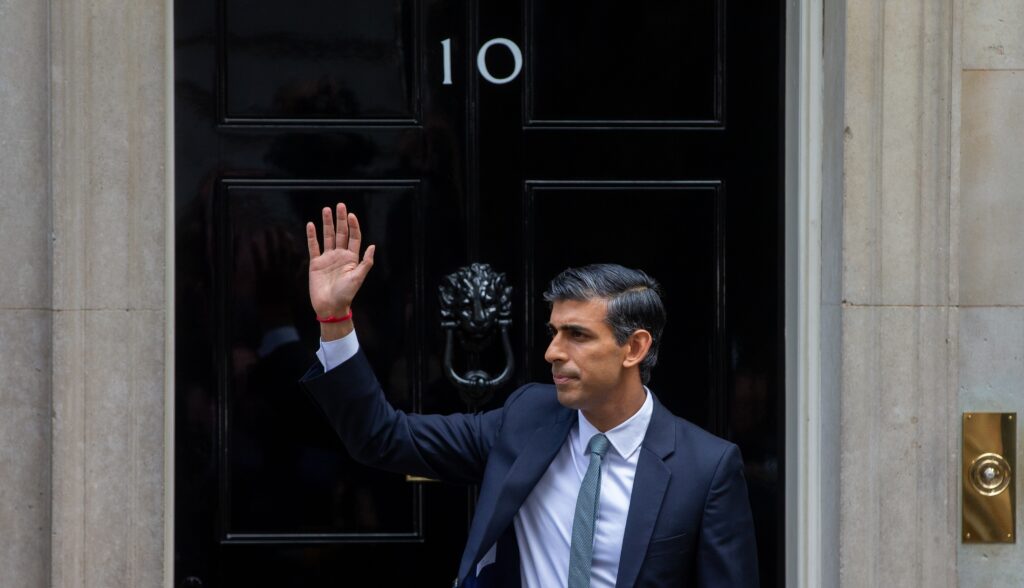On Monday 24th October, Rishi Sunak was announced as Britain’s first Asian Prime Minister. For many this has been celebrated as a breakthrough moment for race relations in the UK, that timely coincided with Diwali, the festival of light.
Rishi Sunak is a second-generation migrant, following his parents’ migration to the UK from East Africa. He is a devout Hindu, and both his parents are of Punjabi descent.
The new PM is not the only ethnically diverse MP to have entered the cabinet recently, with Kwasi Kwarteng being the first Black Chancellor just weeks earlier. The Conservative Party have made massive steps to diversify their senior MPs and cabinet members, through the likes of Kemi Badenoch, Sajid Javid, Suella Braverman, Rehman Chishti and Nadhim Zahawi to name a few.
Rishi Sunak as PM: a breakthrough for British politics and society?
Sunak’s rise to Number 10 has been widely celebrated in recent days, with many hopeful for further changes to diversify British politics.
Sunder Katwala of the British Future think tank reflected on the announcement that:
“It shows that public service in the highest office in Britain can be open to those of all faiths and ethnic backgrounds. This will be a source of pride to many British Asians – including many who do not share Rishi Sunak’s Conservative politics.”.
Many are critical of Rishi Sunak’s policies, including that of race and immigration, and feel he does not ‘represent’ his community as a spokesperson on these matters. It is well known that whilst the Conservative Party has greater ethnically diverse membership, ethnically-diverse communities are more likely to vote for Labour. Nevertheless, Sunak has spoken about his experience of racism in Britain, in a BBC interview, as well as his multicultural upbringing. Referring to a particular case of racism as a teenager, he reflected:
“And it stung. I still remember it. It seared in my memory. You can be insulted in many different ways”
“…In terms of cultural upbringing, I’d be at the temple at the weekend – I’m a Hindu – but I’d also be at [Southampton Football Club] the Saints game as well on a Saturday – you do everything, you do both.”.
What might this breakthrough mean for race and the workplace?
Whilst this may be a historic moment for British politics, the impact of this announcement on wider society and the workplace remains unknown. For some, this may act as a moment of inspiration and pride.
For Marcus Ryder, host of the podcast Black British Lives Matter, he warned that ‘trickle-down diversity’ does not work, and having an ethnically diverse senior leader does not mean an organisation or system becomes free of race inequality.
It is very clear that more needs to be done to ensure ethnically-diverse employees are represented at the very top of organisations. This ‘glass-ceiling’ remains unattainable in many organisations still.
What is the current situation in the workplace?
Research has found that despite 1 in 8 of the British working population being from an
ethnically diverse background, just 6%hold the top managerial positions. The Parker Review (2016) also found that ethnically diverse employees made up just 85 out of the 1,050 director positions on the FTSE 100 UK boards.
Research conducted by the CIPD in 2017 on 1,290 UK employees found that:
- Just four out of ten ethnically-diverse employees are satisfied with their career progression within their organisation.
- Participants of South Asian heritage said a lack of visible role models and ‘people like me’ is a barrier to career progression.
- All ethnically diverse employees are significantly more likely than their white counterparts to say that seeing other people like them who have progressed in the organisation would help boost their careers.
The evidence is clear. More needs to be done to ensure greater career progression and visibility of ethnically diverse colleagues at the very top.
This week’s events mark a step in the right direction for British politics, British society and the workplace. Ensuring there are visible role models is the first step, ensuring this continues at all levels is the next.
Because, you can’t be what you can’t see.
We would value your thoughts. If you want to see change and race equality in the workplace, join the Race Equality Matters’ movement.

